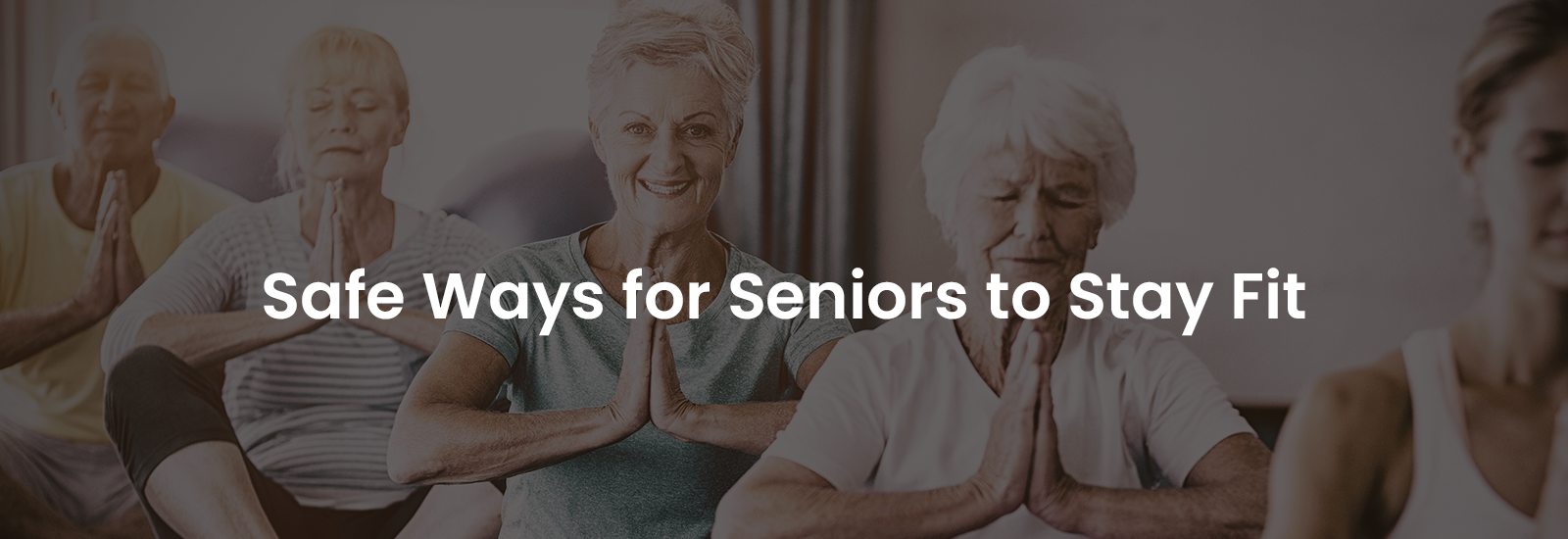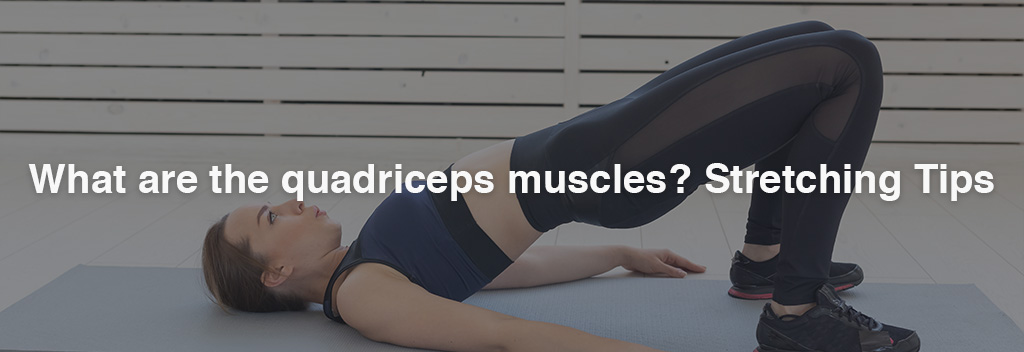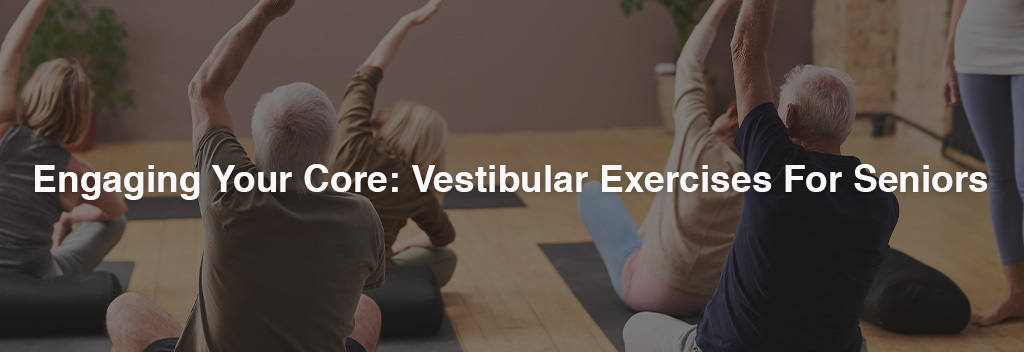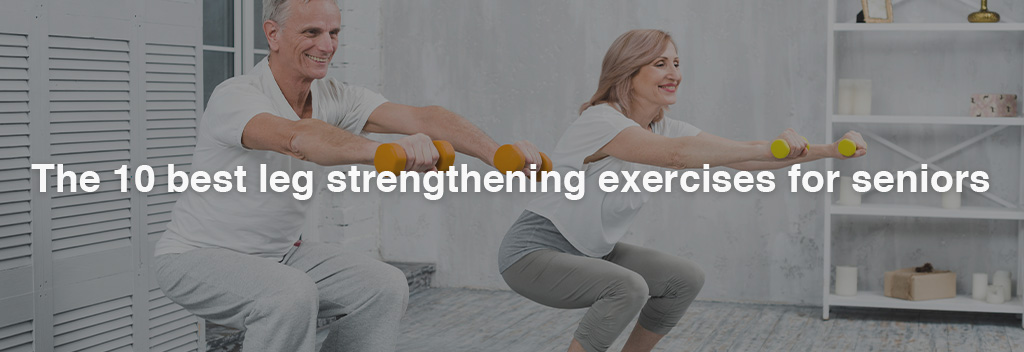
As we age, staying physically active becomes increasingly important. Regular physical activity, including a regular fitness routine, provides numerous benefits for seniors physically and mentally. It helps maintain muscle strength and flexibility, reduces the risk of chronic diseases, and improves overall well-being.
However, not all exercises or fitness routines may suit seniors, especially those with pre-existing medical conditions or physical limitations. Therefore, a fitness routine must be personalized depending on their current health status and fitness levels. This can be done based on a primary care physician’s advice or after consulting a fitness trainer for personalized workout routines. That said, consulting a health and wellness center is always a good option because there’s always safer exercise for seniors for each muscle group.
It is vital that seniors adopt safe and effective exercise practices, which can help them maintain their lifelong mobility and overall health and well-being, which helps them maintain their independence and confidence.
This blog post will look at some exercises that seniors should avoid and why. We will also suggest options that are safer and more beneficial, keeping in mind the unique needs of older adults.
Exercises to Avoid
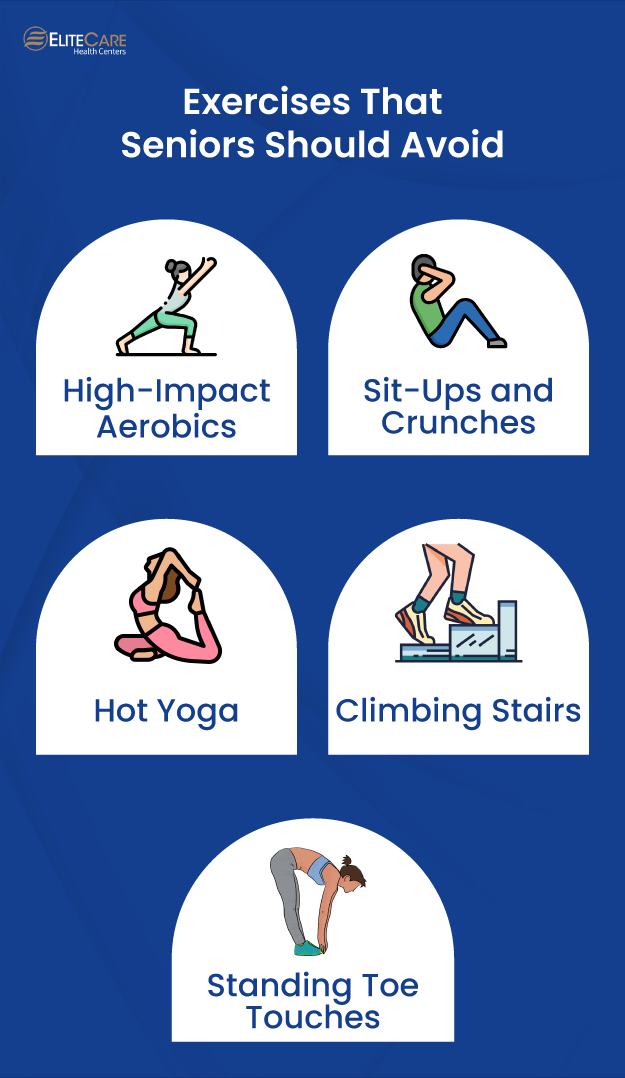
Let’s look at some exercises that seniors should avoid and the ones they should do instead:
High-Intensity Workout/High-Impact Aerobics
As we age, our bones become more fragile, and our joints lose their flexibility, making them more susceptible to injury. High-impact aerobics are intense exercises that involve a lot of jumping, bouncing, and other movements that, in turn, put significant stress on the spine and the joints. These types of workouts are not recommended for seniors as they can cause spine and joint injuries such as knee injuries, ankle sprains, and hip fractures due to the repetitive impact on the joints.
The Effects of High-Impact Aerobics
Performing high-impact aerobics can put immense stress on the joints, especially the knees, hips, and ankles. This stress can lead to spine problems, joint pain, inflammation, and even long-term damage. Long-term damage may include chronic joint pain, arthritis, and osteoporosis. Contacting a health and wellness center is vital to avoid the severity of such problems.
Learn more about the ability of seniors to do strength training exercises
The Safer Alternative: Low-Impact Exercise
Seniors should focus on low-impact aerobic exercises such as walking, swimming, cycling, etc., that offer fitness benefits with minimal risk of injury. Walking is a great low-impact workout that can be easily incorporated into daily routines. It helps in strengthening muscles, improving balance, and reducing the risk of heart disease, diabetes, and obesity. Additionally, swimming, cycling, and dancing are other low-impact exercises that are easy on the joints and can be enjoyed by seniors of all ages and fitness levels.
Sit-Ups and Crunches: Why They Are Not Recommended for Seniors
Sit-ups and crunches have long been considered fundamental in core-strengthening exercises, but recent studies suggest that they might not be the best options for seniors. As seniors’ bodies change with age, their ability to perform certain exercises can become compromised, and sit-ups and crunches are no exception.
The Adverse Effects of Sit-Ups and Crunches on Seniors
Sit-ups and crunches involve lying on the floor and repeatedly flexing the spine to target the abdominal muscles. But these exercises are tough for seniors and can even be dangerous for them. Therefore, these are not advised for seniors. Here are some of the adverse effects:
- Risk of Injury – Seniors have a higher risk of spinal injuries due to weakened bones and decreased flexibility.
- Pressure on Neck and Spine – Sit-ups and crunches put a lot of pressure on the neck and spine, which can exacerbate pre-existing conditions such as arthritis, osteoporosis, and degenerative disc disease.
- Muscle Strain – Performing sit-ups and crunches requires significant core strength, and seniors may not have the strength to perform these exercises correctly, leading to muscle strains and injuries.
The Safer Alternative: Seated Core Exercises
Seniors need to maintain strong core muscles to maintain balance, stability, and posture. Seated core exercises are a safer alternative to sit-ups and crunches. Here are some of the seated core exercises that seniors can perform:
Forward Roll-Ups – Sit on a chair with your feet flat on the ground and your hands behind your head. Slowly roll your upper body forward, curling your chin towards your chest, and then return to the starting position. Click here to learn more.
Side Bends – Sit on a chair with your feet flat on the ground and your hands by your sides. Slowly bend to one side, bringing your hand towards the floor, then return to the starting position and repeat on the other side. Click here to learn more.
Pelvic Tilts – Sit on a chair with your feet flat on the ground and your hands on your knees. Tilt your pelvis forward and then backward, engaging your core muscles. Click here to learn more.
Hot Yoga: Why it is Not Recommended for Seniors
Hot yoga has become increasingly popular over the years due to its benefits for flexibility, stress relief, and relaxation. However, for seniors, hot yoga can pose some significant risks.
The Adverse Effects of Hot Yoga on Seniors
One of the primary concerns with hot yoga for seniors is the high-temperature levels in the room. The temperature in hot yoga classrooms typically ranges from 90-105°F, which can be dangerous for seniors who may have difficulty regulating their body temperature.
Seniors are also more susceptible to dehydration, which can be exacerbated in a hot yoga class. In addition, seniors may have underlying medical conditions that can be worsened by heat and strenuous activity, such as cardiovascular disease or respiratory issues.
Hot yoga also involves intensive levels of stretching and twisting, which can put a strain on joints and muscles. Seniors may already have reduced flexibility and mobility, which can further increase the risk of injury during hot yoga classes.
The Safer Alternative: Basic Yoga and Water Aerobics
While hot yoga may not be recommended for seniors, basic yoga can still provide many of the same benefits while maintaining normal body temperature levels. Basic yoga classes typically take place in a room with a moderate temperature and focus on gentle stretching and relaxation. Yoga can be a great option for seniors – to improve flexibility, balance, and strength, as well as reduce stress and improve overall well-being.
Water aerobics is another great alternative to hot yoga for seniors. Water aerobics provides a low-impact cardiovascular workout that is gentle on the body. It reduces the risk of injury as the buoyancy of the water minimizes impact on the joints.
Climbing Stairs: How to Do It Safely
Climbing stairs is an everyday activity that most of us take for granted. However, for seniors, it can be a challenging task that requires careful thought to avoid potential falls and injuries. While climbing stairs can offer various health benefits, such as improving cardiovascular health and building strength in younger people, it is crucial to do it safely, if at all, when it comes to seniors.
The Adverse Effects of Not Climbing Stairs Properly for Seniors
Climbing stairs can put a strain on the joints and muscles of seniors, particularly those who have arthritis or mobility issues. Additionally, if seniors have a history of falls or balance issues, climbing stairs can increase their risk of injury. It can also cause a sudden increase in blood pressure, which may not be suitable for seniors with hypertension.
How to Do It Safely
Here are a few tips that seniors can follow to climb stairs safely:
- Take it Slow: Seniors should take it slow while climbing stairs and avoid hurrying through them. Taking small steps and pausing between each step can help reduce the strain on joints and muscles.
- Use Handrails: It’s essential to use the handrails while climbing stairs. Holding onto the handrails can provide support and stability, reducing the risk of falls and injuries.
- Wear Proper Footwear: Seniors should wear comfortable and supportive footwear while climbing stairs. Shoes with non-slip soles can provide a better grip and prevent slips and falls.
- Avoid Carrying Heavy Loads: Carrying heavy bags or loads while climbing stairs can increase the risk of losing balance and falling. Seniors should avoid carrying heavy loads and consider using a backpack instead.
The Safer Alternative: Heel-to-Toe Walking
For seniors who find it challenging to climb stairs, heel-to-toe walking can be an excellent alternative. Heel-to-toe walking involves walking in a straight line, touching the heel of one foot to the toe of the other with each step. This exercise for seniors can improve balance, coordination, and strength without putting too much strain on joints and muscles.
Standing Toe Touches: Why Seniors Should Avoid
Stretching is an essential part of exercise and staying active, but some stretching exercises can be harmful to seniors. One such exercise for seniors is standing toe touches. While this exercise may seem simple and harmless, it can cause significant harm to seniors, particularly those with pre-existing conditions.
The Adverse Effects of Standing Toe Touches for Seniors
Standing toe touches involve standing with your feet together and then bending forward to touch your toes without bending your knees. This exercise may lead to several adverse effects for seniors, such as the following:
- Straining the lower back: Seniors with weak back muscles are at risk of straining their lower back muscles while performing standing toe touches. This can cause severe pain and discomfort and may even lead to long-term back problems.
- Causing dizziness and loss of balance: When seniors bend forward, blood can rush to the head, causing dizziness and loss of balance. This can be especially dangerous for those with low blood pressure or those prone to falls.
- Exacerbating arthritis pain: Seniors with arthritis may experience increased pain and discomfort in their joints while performing standing toe touches. This exercise puts pressure on the joints, leading to increased pain and swelling.
The Safer Alternative: Seated Stretching Exercises
Fortunately, there are safer alternatives to standing toe touches that seniors can perform without risking injury. Seated stretching exercises are a great option for seniors as they allow for a controlled range of motion and reduce the risk of injury.
Some safe seated stretching exercises for seniors include:
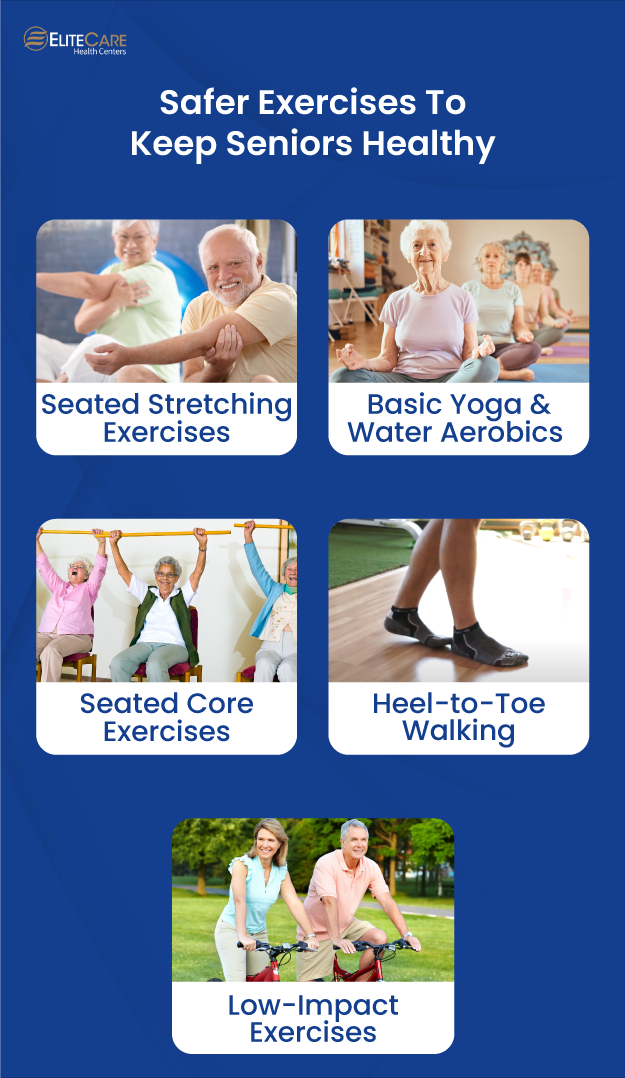
- Seated Hamstring Stretch: Sit on a chair with your legs extended in front of you. Gently bend forward from the hips, trying to reach your toes. Click here to learn more.
- Seated Forward Bend: Sit on a chair with your legs extended in front of you. Slowly bend forward from the hips, reaching for your feet. Click here to learn more.
- Seated Knee-to-Chest Stretch: Sit on a chair and bring one knee up towards your chest, holding it with both hands for a few seconds. Repeat with the other leg. Click here to learn more.
The Bottom Line
Maintaining an active lifestyle is crucial for seniors to promote overall health and prevent potential medical concerns associated with a sedentary lifestyle. By avoiding high-risk exercises and engaging in safe alternatives like walking, water aerobics, seated core exercises, heel-to-toe walking, and seated stretching exercises, seniors can stay active and maintain their physical and mental health.
However, if any health issues do arise, our medical clinic EliteCare Health Centers are dedicated to delivering exceptional senior care services tailored to seniors’ unique needs. Book an appointment with us today and discover the unparalleled difference we can make in your healthcare journey. Contact us now to take the first step toward optimal well-being.


